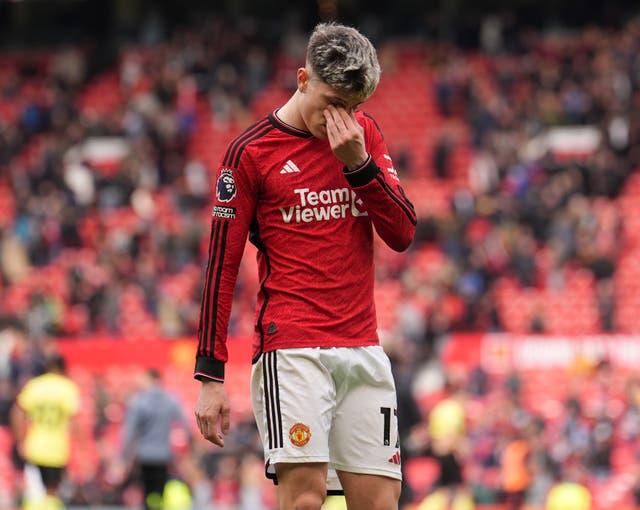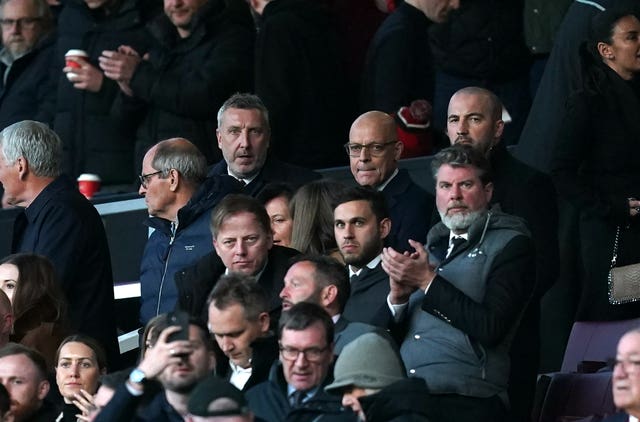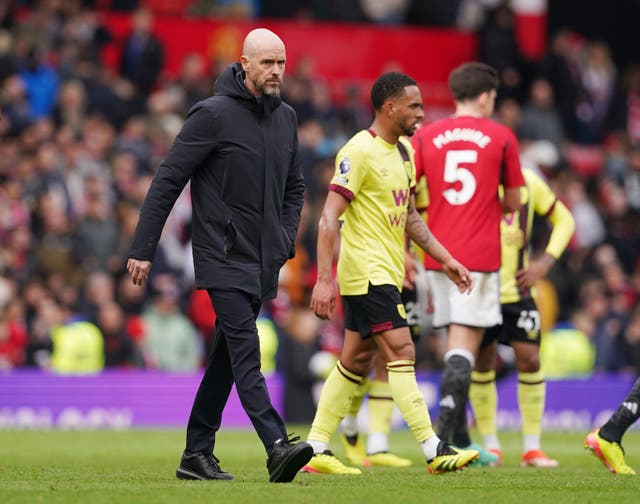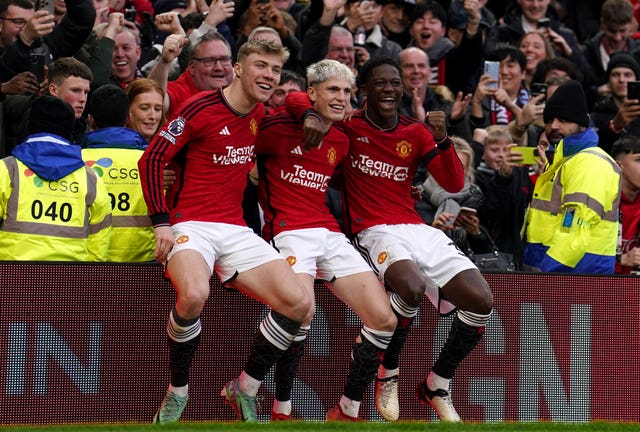
From signings to sales and the wider club management, Manchester United face some big decisions heading into the summer.
Minority owner Sir Jim Ratcliffe is determined to take the 20-time league winners back to the top and, here, the PA news agency has taken a look at the job in hand.
What is the situation at United?

The club are struggling on the pitch and in a state of transition off it. Having bowed out of Europe before Christmas and now all but certain to miss out on Champions League qualification, the FA Cup final against Manchester City on May 25 offers United the chance to end a largely miserable campaign on a high. The temperature has naturally increased on Erik ten Hag’s hotseat during a poor season in which ambitious Ineos is having to consider how best to take the club forward. It has been looking under the hood since Ratcliffe struck a deal in December, then officially took control of football operations at United when the £1.3billion minority ownership deal was ratified by relevant parties in February.
What changes have there been so far?

Ineos is understood to feel fundamental changes are needed across the board to right a ship that has increasingly gone off course since the Glazers’ controversial leveraged takeover in 2005. Poaching Omar Berrada as chief executive from Manchester City was the first step on a journey to what United said was putting “football and performance on the pitch back at the heart of everything we do”. The move was announced in January and Berrada is due to start in mid-July, bringing much-needed leadership and clarity to a club where he will again work closely with Jason Wilcox. Another former high-ranking City employee, the 53-year-old this month left his role as Southampton’s director of football to become technical director at United. Wilcox will serve in a heightened position until Dan Ashworth joins from Newcastle as sporting director. Still on gardening leave with talks at an impasse, he is not expected to be in place for the summer window. Football director John Murtough has left in the meantime and is the most eye-catching exit under Ineos to date.
What is happening with the manager?

After winning the Carabao Cup, reaching an FA Cup final and finishing third in his first season, things have gone awry during a bumpy, injury-hit second campaign under Ten Hag. Pressure has mounted on the Dutchman, who has just one year left on his deal, and he has come out fighting, angered by what he feels are harsh perceptions and a belief that United do not need to start from scratch. Ten Hag has been involved in all recruitment meetings and pre-season tour planning, but it remains to be seen whether he will be there to see it through. FA Cup glory would surely earn him the chance to start another season as, unlike compatriot Louis van Gaal in 2016, there have been mitigating factors on top of a paucity of standout replacements. Gareth Southgate, Graham Potter and Thomas Tuchel are the current bookmakers’ favourites for the post.
What about summer transfers?

After some big spending summers and with their belt tightened, like the rest of Europe, due to profit and sustainability considerations, United’s budget is looking restricted. There is an acknowledgement that they will need to raise money through sales after years of what Ineos believes has been a pattern of poor player trading, but not everyone is up for sale. Young talents Kobbie Mainoo, Alejandro Garnacho and Rasmus Hojlund are among those ringfenced as the club build for the future. Mason Greenwood, Jadon Sancho, Donny van de Beek and Hannibal Mejbri are sellable assets returning from loans, while the likes of Harry Maguire, Victor Lindelof, Aaron Wan-Bissaka and Scott McTominay could attract interest. Speculation continues over Marcus Rashford’s future and Casemiro would be allowed to leave if there the right proposal arrives as links to Saudi Arabia persist. Raphael Varane is set to leave on a free as it stands, although a new deal has not yet been ruled out unlike with Anthony Martial. United are not expected to make Sofyan Amrabat’s loan permanent and it will be interesting to see what Ineos can do this summer.


Why are you making commenting on The Herald only available to subscribers?
It should have been a safe space for informed debate, somewhere for readers to discuss issues around the biggest stories of the day, but all too often the below the line comments on most websites have become bogged down by off-topic discussions and abuse.
heraldscotland.com is tackling this problem by allowing only subscribers to comment.
We are doing this to improve the experience for our loyal readers and we believe it will reduce the ability of trolls and troublemakers, who occasionally find their way onto our site, to abuse our journalists and readers. We also hope it will help the comments section fulfil its promise as a part of Scotland's conversation with itself.
We are lucky at The Herald. We are read by an informed, educated readership who can add their knowledge and insights to our stories.
That is invaluable.
We are making the subscriber-only change to support our valued readers, who tell us they don't want the site cluttered up with irrelevant comments, untruths and abuse.
In the past, the journalist’s job was to collect and distribute information to the audience. Technology means that readers can shape a discussion. We look forward to hearing from you on heraldscotland.com
Comments & Moderation
Readers’ comments: You are personally liable for the content of any comments you upload to this website, so please act responsibly. We do not pre-moderate or monitor readers’ comments appearing on our websites, but we do post-moderate in response to complaints we receive or otherwise when a potential problem comes to our attention. You can make a complaint by using the ‘report this post’ link . We may then apply our discretion under the user terms to amend or delete comments.
Post moderation is undertaken full-time 9am-6pm on weekdays, and on a part-time basis outwith those hours.
Read the rules here